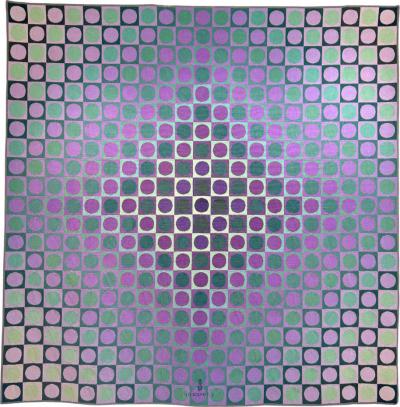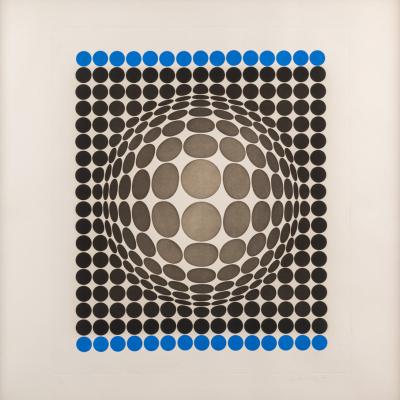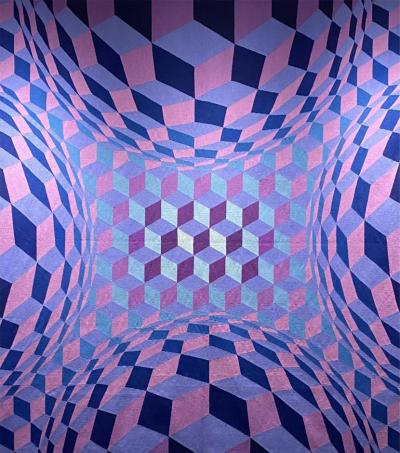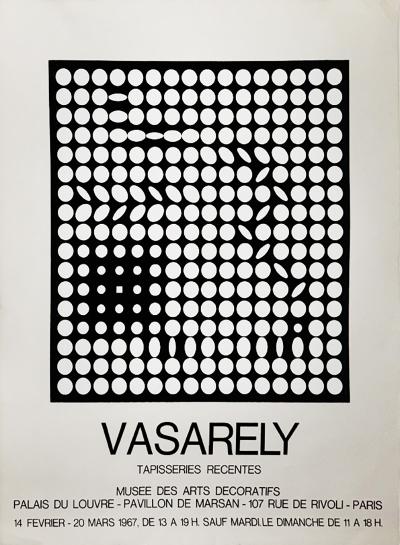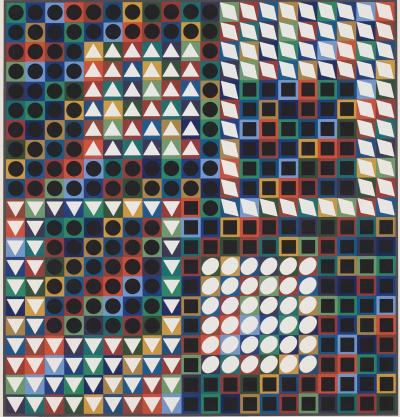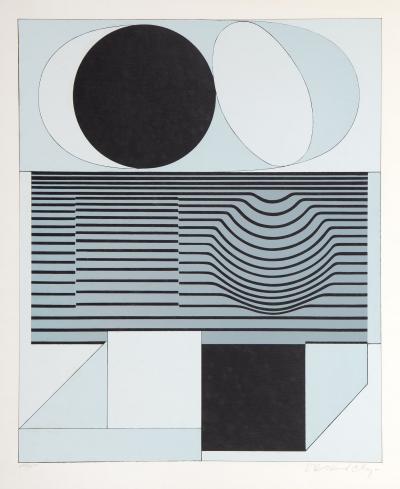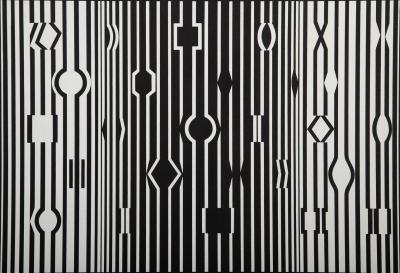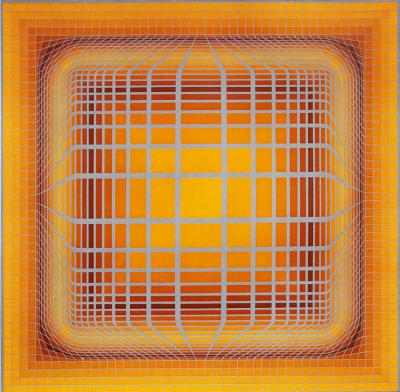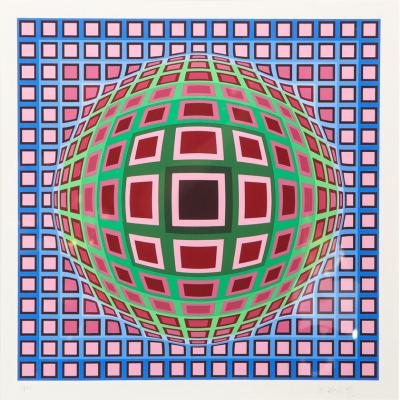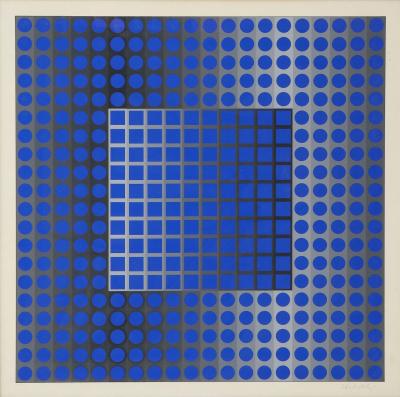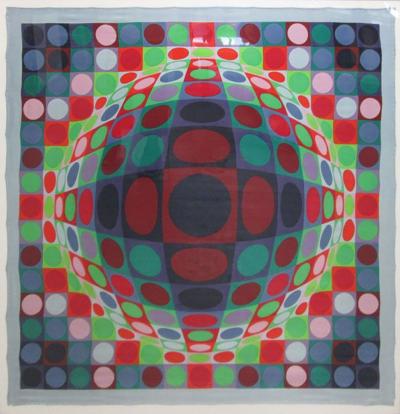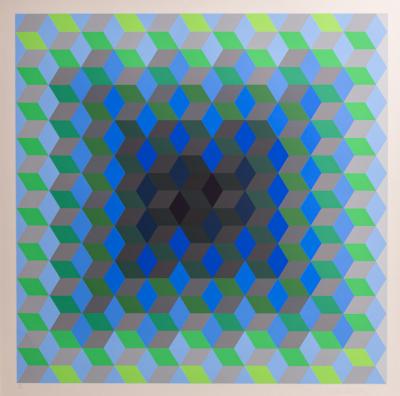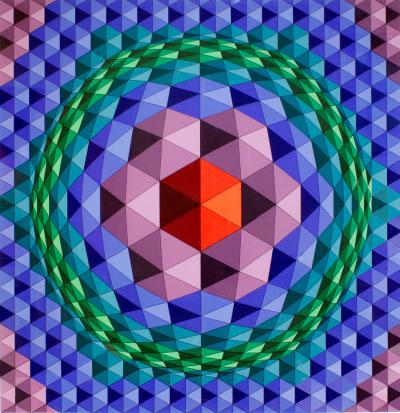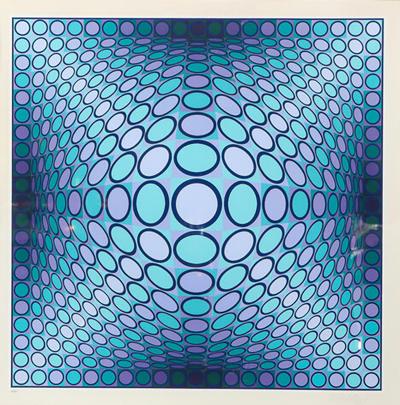Victor Vasarely
Hungarian, 1908 - 1997
Victor Vasarely, born Győző Vásárhelyi on April 9, 1906, in Pécs, Hungary, was a pioneering artist credited as a leading figure in the Op art movement. His journey began with medical studies in Budapest before he transitioned to the arts, studying under A. A. Murashko. In the late 1920s, he explored geometric abstraction and optical illusions, ultimately moving to Paris in 1930, where he worked as a graphic designer.
Vasarely’s notable work, Zebra (1937), is often cited as one of the first examples of Op art. Over his career, he developed a unique visual language characterized by vibrant geometric patterns and dynamic compositions. His innovative approach earned him international recognition, leading to numerous exhibitions and the establishment of museums dedicated to his work in France and Hungary. Vasarely continued to create impactful art until his passing on March 15, 1997, in Paris, leaving a lasting legacy that continues to influence contemporary art.
Vasarely’s notable work, Zebra (1937), is often cited as one of the first examples of Op art. Over his career, he developed a unique visual language characterized by vibrant geometric patterns and dynamic compositions. His innovative approach earned him international recognition, leading to numerous exhibitions and the establishment of museums dedicated to his work in France and Hungary. Vasarely continued to create impactful art until his passing on March 15, 1997, in Paris, leaving a lasting legacy that continues to influence contemporary art.
Victor Vasarely
Victor Vasarely, Acquaforte/Acquatinta on paper, 1971
H 38.58 in W 38.58 in D 1.57 in
$ 6,200
Access Trade Price
Victor Vasarely
Victor Vasarely, Tapisseries Récentes, 1967 (Exhibition Print)
H 36 in D 1 in DIA 28 in
$ 2,800
Victor Vasarely
Series 1977 Victor Vasarely Colorful Optic Silkscreen
H 10 in W 10 in D 2 in
$ 4,800
Victor Vasarely
Viktor Vasarely, signed and numbered silk-screen print on paper, France, 1960s.
H 30.71 in W 30.71 in D 0.79 in
Victor Vasarely
Victor Vasarely Geometric Print With Purple Frame 1970s
H 38 in W 36 in D 1 in
$ 4,500
